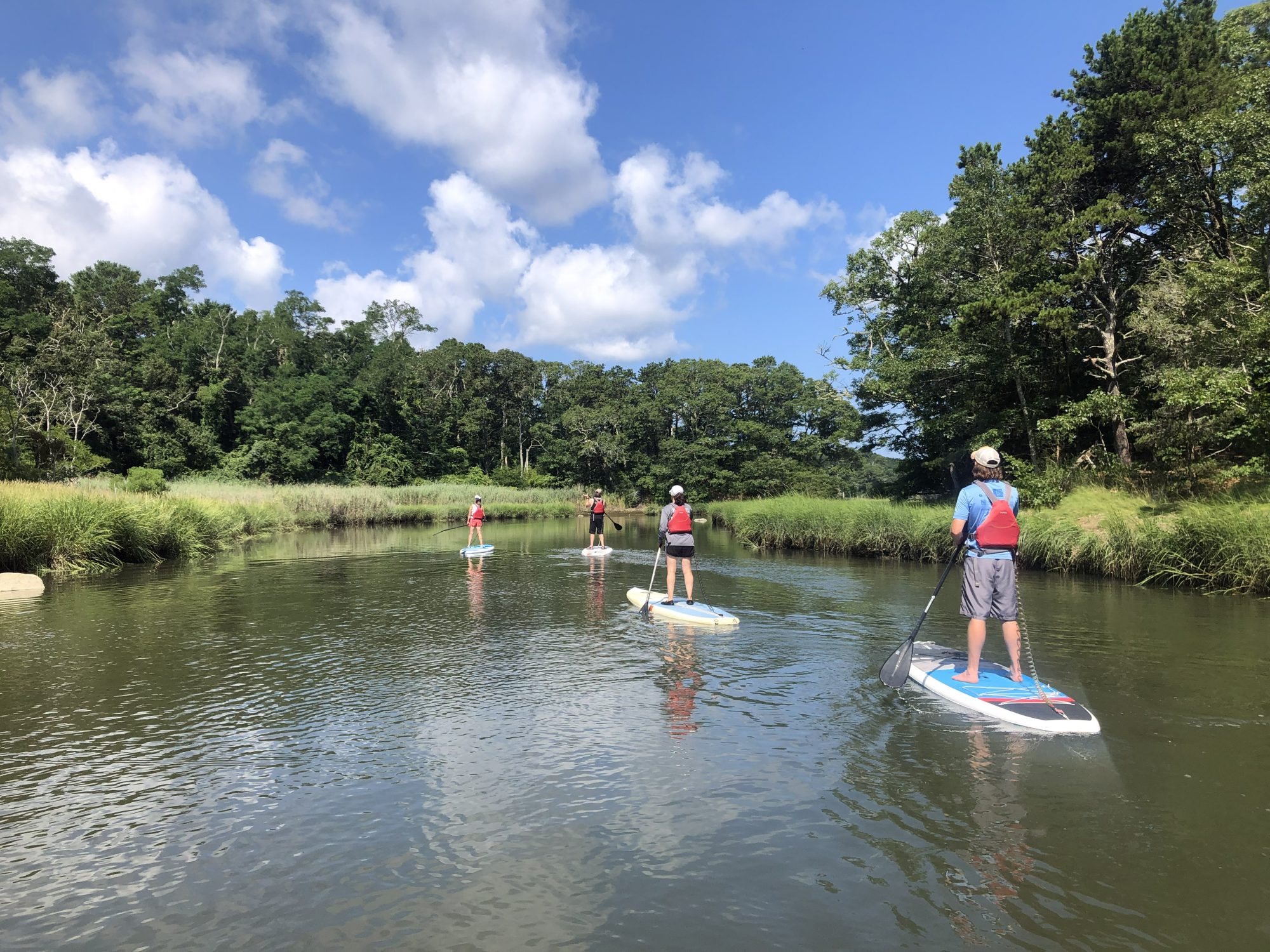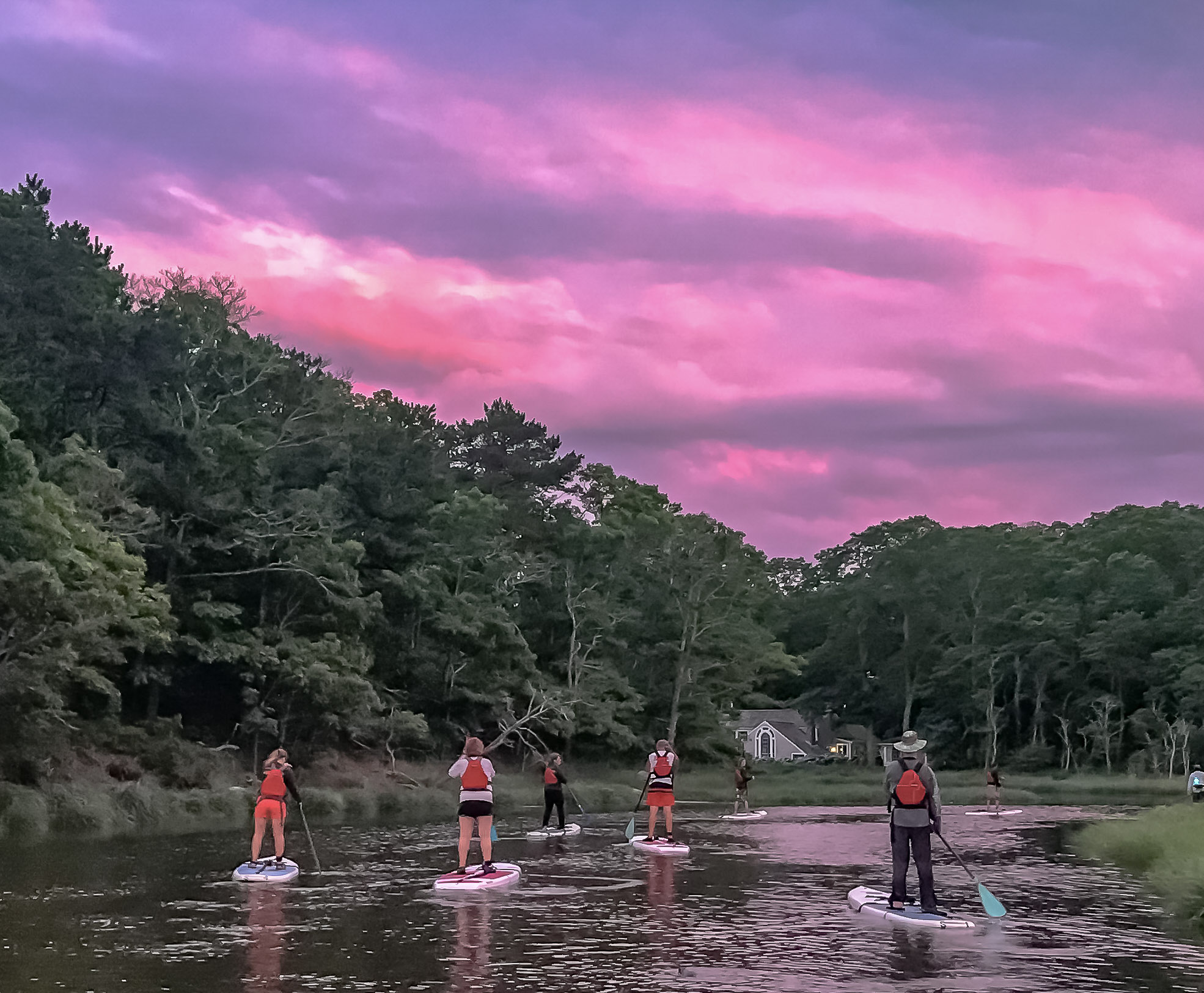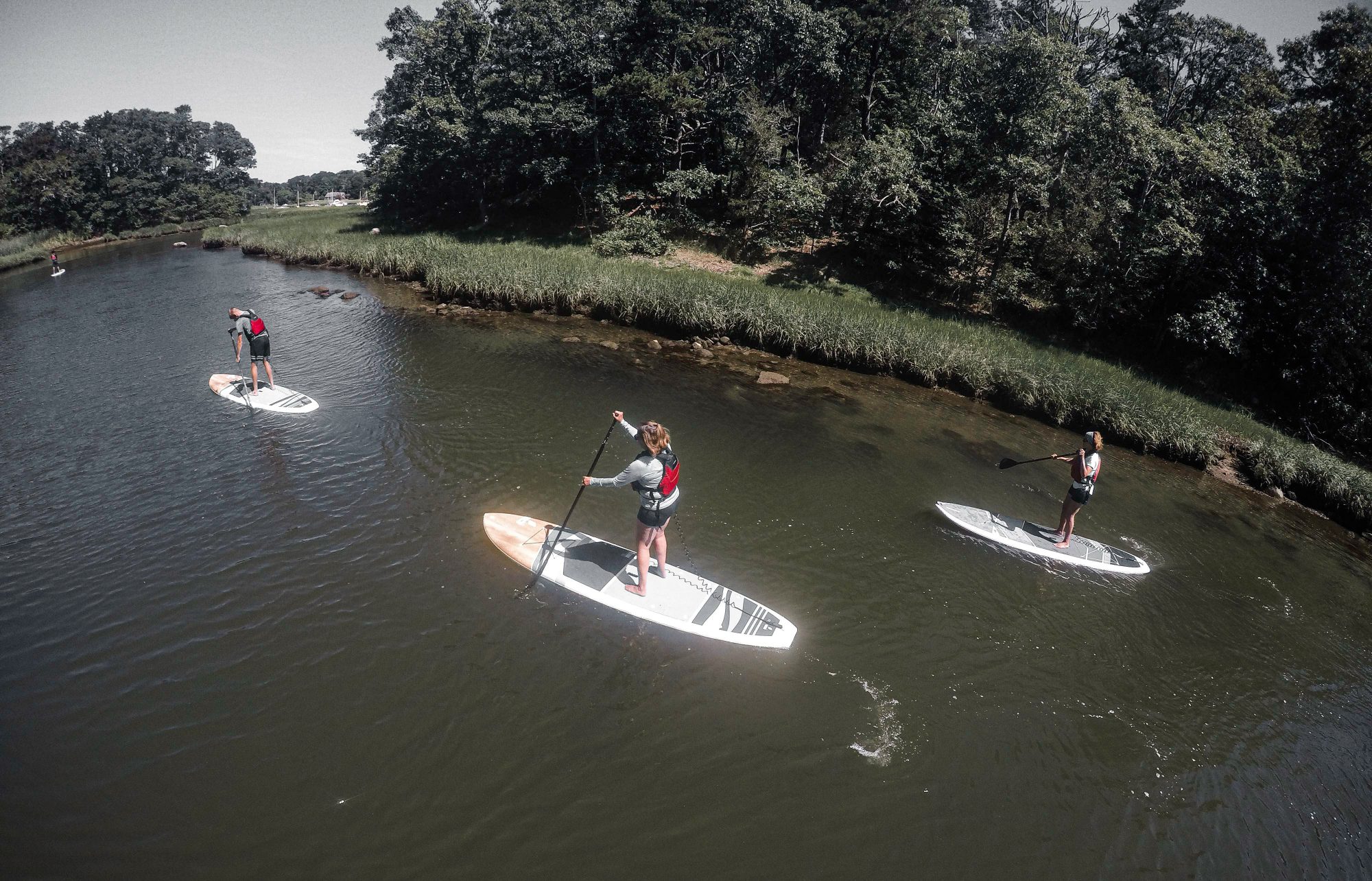It’s summertime, and the living’s easy. While the dog days of summer are an optimal time to get out on the paddleboard, the warm air and pleasant water temperatures make it easy to let your guard down and neglect some basic safety precautions. As we’ve seen in the news lately, a leisurely afternoon paddle can turn dangerous in an instant. With that in mind, here are a few SUP safety reminders.

SUP Safety Basics
The best things you can do to keep yourself safe while paddleboarding are to wear a personal flotation device (PFD) and use a leash.
PFDs for Paddleboarding
Always wear a PFD when paddleboarding! There are two PFD options available to paddleboarders: the traditional PFDs that fit like a vest and use a buoyant material (commonly foam) to provide flotation and waist packs that are either inflatable by CO2 gas cartridges or by manually blowing them up.
Traditional PFDs are an excellent choice when paddling in unfamiliar waters or challenging conditions. They come in various styles (zip-up, side-entry, and pullover), are easy to use (just put one on), require minimal maintenance, and are designed to keep you afloat no matter what. A paddling-specific traditional life vest allows a wide range of motion when paddling, but they are bulkier than the alternative and can get warm, especially on hot summer days.
Inflatable waist packs are a fine choice for paddling in warm, familiar waters. They’re lightweight, less cumbersome, and quite a bit cooler than traditional vests. The downside of inflatable waist packs is that they require considerably more attention from paddlers. Most notably, a paddler must inflate a waist pack in order for it to provide buoyancy—not something that’s easily done if you happen to injure yourself or knock yourself unconscious.
Inflatable waist packs also have a steeper learning curve than traditional PFDs, as paddlers must wear them correctly, with the PFD chamber facing forward and the “rip cord” easily accessible. It’s also important that paddlers periodically check that their CO2 cartridges are in working condition, that the connection between the cartridge and the PFD is in good shape (i.e., isn’t rusty or corroded), and that the inflatable PFD doesn’t have any leaks or defects in the material.

Leashes for Paddleboarding
Just as you should always wear a PFD while paddleboarding, you should also always wear a leash. It only takes a few seconds for your board to drift away from you. If you think being up a creek without a paddle is bad, imagine floating in the middle of Cape Cod’s Little Pleasant Bay without a SUP. A leash assures that you’ll get your board back.
There are two primary types of leashes available to paddlers: straight and coiled. Both will work fine to keep you connected to your board, but there are some subtle differences between them.
- Straight leashes are aimed more at those who surf their paddleboards.
- Coiled leashes are typically favored for general paddleboarding—they drag less in flat water, are less prone to collect debris floating in the water, and keep the board close if you end up swimming.
There are two traditional places to attach a leash: the ankle and the calf. There is no right or wrong attachment point and each has its own advantages.
- Ankle: the most common place to attach a leash and popular among paddlers who surf. They’re generally comfortable and make pulling the board back relatively easy.
- Calf: this attachment point makes it easier to move around the board and it’s less likely that you’ll trip on the leash. It also helps keep the leash out of the water, minimizing drag.
A third and less-used option is to attach your leash directly to your PFD. While most PFDs do not have a prescribed attachment point, you can use the cinch straps on the sides of the PFD. Attaching your leash to a PFD helps keep it from dragging in the water, prevents it from getting tangled in your feet, and doesn’t put any strain on your legs if you end up falling from the board. This is an especially popular configuration with white water paddlers when used in combination with a quick release, as it allows padders to speedily separate from the board in the event of an emergency.
Many waist-pack-style PFDs come equipped with D-ring attachments on the waist belt. While these attachment points are not designed for load-bearing purposes, they can function as an attachment option for a leash.

Other Considerations for Safer SUPing
While wearing a PFD and leash might save your life, there are a handful of other steps you can take to improve your safety on and around the water.
Most importantly, get in the habit of wearing something on your feet. This is a hard lesson I had to learn with a trip to the emergency room. From broken glass to forgotten fish hooks to sharp reeds, you simply don’t know what hazards are lurking underwater. Wearing something on your feet is an easy way to protect yourself against an injury.
Paddling during the heat of summer can put a lot of stress on your system. Protect yourself from the harsh rays of the sun by wearing sunscreen and/or wearing UPF-rated clothing. Don’t forget to drink plenty of fluids before and after paddling, and stash some water on your board just in case.
In the End
Ultimately, staying safe while paddleboarding is about making smart decisions, like ensuring you stay buoyant and attached to your board in the event of an accident or emergency. Wear a life jacket, attach yourself to your board with a leash, and protect yourself from obvious risks like sunburn and dehydration—doing so is cheap, easy, and can save your life.
Luke Foley
Luke Foley is passionate about discovering and sharing hidden local treasures and has long been a New England adventure enthusiast. After all, there are only a few places where you can skin for fresh tracks in the morning and have a sunset surf session on the same day.
Related Posts
April 2, 2024
10 Tips for Mountain Biking Etiquette During Mud Season
One rough spring could ruin the…




